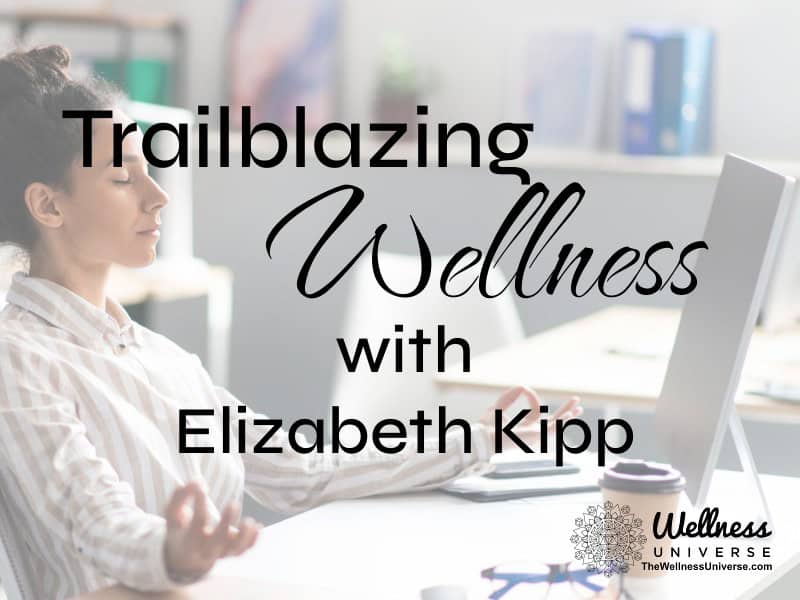What happens when our emotions get frozen in our bodies? I have a vivid memory of emotionally freezing during a playground incident when I was a kid. A boy made a sing-song rhyme about my name. (I won’t repeat what he said.) My little-six-year-old self knew instinctively if I made a peep I would never hear the end of it. I froze like a rabbit. I held my breath. When taunting me didn’t bring satisfaction, he left. Success. My stress response kept me safe.
Freezing in response to stressful situations developed into my preferred default behavior pattern as an adult. My stress response pattern kept my muscles tightly wound on high alert ready to run for safety.
When my massage therapist worked on my tight calf muscles, she asked me, “Leah, what are you running from?” Stress. I am running from stress. And fear of being humiliated.
My playground incident played a small role in my life that helped embed a pattern in my autonomic nervous system. Autonomic refers to all the automatic processes in the body you don’t need to consciously regulate.
Maybe you have your own small and not so small life incidents that embedded an emotional response in your autonomic nervous system.
A Roadmap to Self-Discovery
Polyvagal Theory, developed by Stephen Porges in the 1990s, offers a roadmap from a dysregulated to a regulated nervous system. It explains how our nervous system works and equips us with skills to self-regulate in the face of perceived challenges.
At the core of Polyvagal Theory lies the concept of befriending our nervous system. It’s about cultivating a deep sense of connection and understanding with the inner workings of our body. When we follow this journey of self-discovery, we unlock a profound sense of empowerment and confidence. We’re able to navigate life’s uncertainties with courage and possibility.
Now I understand better how my nervous system was protecting me. We regularly shift from regulated to dysregulated nervous systems. The goal is to get back to regulation easily again when we notice we’re off center. Some days we need to ramp up to meet the moment without losing our center. Some days we need to put on the brakes to feel more at ease.
Befriending our Nervous System
But how do we begin this journey of befriending our nervous system? It starts with regulation – actively co-piloting our internal responses to external stimuli. Rather than succumbing to the chaos, we approach it with curiosity and compassion, tuning inward without judgment or criticism. It’s about developing a keen awareness of what feels true for us, anchoring ourselves in our values and body wisdom.
By repatterning our nervous system, we cultivate resilience and flexibility, perceiving excitement where once we saw only threat.
Deb Dana’s book, Anchored: How to Befriend your Nervous System Using Polyvagal Theory, offers us multiple tools to regulate our nervous systems. Maybe you’re like me and intuitively practice many of these self-regulating tools. Maybe, also like me, you’ll benefit from reading and rereading Anchored to bring deeper self-awareness into the practice of regulating the nervous system.
The book emphasizes the importance of recognizing the three states of the autonomic nervous system – fight-flight, freeze, and ventral regulation. Each state offers valuable insights into our internal landscape, guiding us back to a place of safety and connection when we veer off course. Through self-awareness and gentle self-inquiry, we learn to track our journey into dysregulation and find our way back to center.
The ability to flexibly move between states is s sign of well-being and resilience. – Deb Dana
The Vagal Nerve Information Super Highway
Central to this journey is the vagal autonomic nervous system. Vagal means wandering and autonomic means automatic – think heartbeat and breath rhythm. The vagal nerve is a complex bundle of nerves that wanders through the body from the base of the skull, down the neck, shoulders, back and around the sides to the abdomen connecting the brain to the digestive system. The is an information super-highway traveling in two directions. 80% of the information travels from body to brain and 20% of the information travels from brain to body.
The sympathetic nervous system flows behind the heart on the back and upper thoracic. With a regulated nervous system, we don’t get easily triggered and can go with the flow when the coffee spills or the car ahead drives slowly in the fast lane. Life feels manageable. We feel connected to people, friendship and feel safety in numbers.
When we become dysregulated, we’re off center and ungrounded. With an unregulated sympathetic system, the fight flight response is engaged with a sense of impending danger; the world feels unsafe, people are unsafe. Communication cues are often misread and interpreted as aggressive or hostile. We’re attuned to signs of danger and are hypervigilant. We look for adversaries, betrayal, and experience separation.
When our awareness is disconnected from our body we can’t hear our body wisdom.
When we’re pulled out of regulation, the first response to externally perceived threat is fight flight action to protect self and others. Staying in this state too long leads to immobilization and disconnection.
When we experience a fight flight response to stress we have choices and experience threat by attacking or escaping. When we feel we have no choices after anger and anxiety, we might shut down and disconnect, like a turtle pulling into its shell. We might collapse into apathy and feel disempowered.
When we get stuck in endless challenges with no way to manage, the never-ending to-do list feels overwhelming, money woes feel unmanageable, or a disagreement feels hopeless we might become trapped in a dysregulated turtle state. Polyvagal theory calls this a dorsal vagal state.
When we’re disconnected from our bodies, we lose touch with its innate wisdom, and our ability to self-regulate. However, by increasing vagal tone, we can relax faster and respond to stress with confidence and agility.
We can track our journey into dysregulation and follow a roadmap back to the safety of regulation. When we learn to befriend our nervous system we can feel empowered and confident during times of change and uncertainty. We can respond to challenge with courage and possibility.
Be with our experiences rather than get hijacked by them. – Deb Dana
We can actively co-pilot our nervous system to use its information to respond to the unpredictable with flexibility. Bring curiosity and compassion rather than self-criticism and judgment to life experiences.
When we’re able to self-regulate our nervous system we feel more empowered, confident, and able to handle change. Empowerment and confidence promote increased feelings of well-being and decreased feelings of anxiety and depression.
When we increase vagal tone, we can relax faster and respond to stress with confidence and agility.
Anchored teaches tools for how to return to the safety of our body. We can learn to repattern the nervous system to become resilient and flexible in face of change and repattern perceived threat into excitement.
Four Body Awareness Tools
- Knowing what is true for you. What does your body know as true? What does a YES feel like in your body when:
- You feel connected, organized, and resourced?
- You say yes because you feel trapped and have no other option?
- You say yes when you are eager and excited?
- You say yes hesitantly with fear of reprisal?
- Notice and reflect on the differences in your body feeling.
- Notice A Fight Flight Response in your body– Think of a time when…
- You took action in response to challenge
- You ran away in response to challenge
- Where does your body hold the state of shutdown?
- Where does your body hold onto fight flight?
- Ask your body wisdom to inform you – notice where your body gets activated in a sympathetic nervous fight flight response.
- Safe mobilization – try a small movement.
- Tune in to the body. How does the body want to respond? A small movement that isn’t big or intense but moves the energy. A small body movement offers a clue of safety and shows the way back to regulation.
- Start with a deep breath to engage the rib cage in movement.
- It’s only when we can’t find our way back to regulation -back to center- that we suffer physically and psychologically. Without connection to self, others, the natural world, and our spiritual nature, we suffer physical, emotional, relational, and spiritual distress.
- Find safety within Go to the place in your body mind spirit awareness where you feel safety and a feeling of being in the flow. Find a memory to lock in that feeling state of safety and connection. You might see colors, feel energy, sense a memory feel. For me, I notice the natural world around me and look for beauty in reflections, the play of light and shadows, colors, sounds of bird song or windchimes.
- Where and when do you experience that feeling of safety and flow?
When we get swamped by emotion and lose our grounding, we lose the ability to reflect on our state. When we can observe our state, we can create the distance needed for reflection. When we pause to observe, we can move into awareness rather than get swamped in dysregulation.
With awareness comes understanding and choice.
Simple ways to nourish your vagal nervous system for groundedness and centeredness
Feeling present in your body. Start with a morning routine to feel at home in your body. Is there a routine that helps you feel grounded and present in your body? For me, my morning routine includes quiet, reflective time for moving in my body with intentional listening to how my body wants to move in the moment. My soul aches with longing if I go too long without creating sacred space to listen to my body wisdom. To come home to my body.
Savoring. Notice and focus on something you appreciate in the moment. Stay with your awareness. Amplify and feel the fullness of your focused awareness. For example: savor a bite of a delicious food. Especially enjoyable for me is a bite of 70% dark chocolate. You might enjoy a grape or a bite of a succulent fruit. Notice the scent, color, and size of what you’re about to bite into. Put your morsel into your mouth and experience it with fresh sensations. Before biting, notice and savor the flavor, texture, temperature. Feel your mouth response to the morsel. Savor the flavor for 20 seconds.
Embrace movement. How does your body want to move in the moment? What impulse to move in the moment draws you forward? Become aware of your body impulses. Start with the impulse to inhale. Try this: Exhale all the air from your lungs and pause a moment without straining. Allow the impulse to inhale your next breath to arise naturally. Now notice any impulse of your body to move.
Notice the environment around you. What cues are you aware of that contribute to feelings of welcome, safety and belonging in your environment? Or cues that contribute to not feeling safe in your environment?
Listen deeply with the ears of your heart to your inner knowing. Ask your heart wisdom, what does your nervous system need in this now moment?
Regulation isn’t just about managing stress; it’s about embracing life’s ebbs and flows with equanimity. By savoring the present moment and reconnecting with our inner wisdom, we anchor ourselves in a state of groundedness and centeredness. Whether it’s through movement, mindfulness, or simply pausing to listen to our body’s whispers, we find solace in the rhythm of life.
Connect with Leah on The Wellness Universe.
Resource
Dana, Deborah. Anchored: How to Befriend your Nervous System using Polyvagal Theory, 2021. https://www.polyvagalinstitute.org/about-deb
All information, content, and material are for informational purposes only and are not intended to serve as a substitute for the consultation, diagnosis, and/or medical treatment of a qualified physician or healthcare provider. The information supplied through or on this page, or by any representative or agent of The Wellness Universe, is for informational purposes only and does not constitute medical, legal, or other professional advice. Health-related information provided through this website is not a substitute for medical advice and should not be used to diagnose or treat health problems or to prescribe any medical devices or other remedies. The Wellness Universe reserves the right to remove, edit, move, or close any content item for any reason, including, but not limited to, comments that are in violation of the laws and regulations formed pursuant to the Federal Food, Drug, and Cosmetic Act. None of the posts and articles on The Wellness Universe page may be reprinted without express written permission.
Exercise for Bone Health, Strength, & Mobility
A 6-session program that will help you to enjoy better health, mobility, vitality, and overall wellbeing. Better strength, balance, mobility, & posture = less falling and less fracture risk. You’ll learn to enjoy movement with less fear.
Learn more here –

see how our self-care books are helping thousands of people around the world. Digital and paperback books are available now.
Connect to the people that help you live your best life: The Wellness Universe
Leah Skurdal guides people to up-level their stress resilience to improve relationships. Leah shares intuitive insights in private Energy Healing to address the roots of disharmony. As an inspirational speaker and published author, Leah offers lively classes, experiential workshops, and keynotes.





I believe this web site has got some very great information for everyone :D. “Heat cannot be separated from fire, or beauty from The Eternal.” by Alighieri Dante.
Beautiful quote! Thank you for sharing it.
After all, what a great site and informative posts, I will upload inbound link – bookmark this web site? Regards, Reader.
Thanks for reading, commenting and sharing the post.
Hello very cool web site!! Man .. Excellent .. Wonderful .. I will bookmark your web site and take the feeds additionallyKI’m satisfied to seek out numerous helpful info right here in the post, we want develop extra techniques in this regard, thanks for sharing. . . . . .
Thanks for reading and commenting. We’re glad we’re offering valuable content.